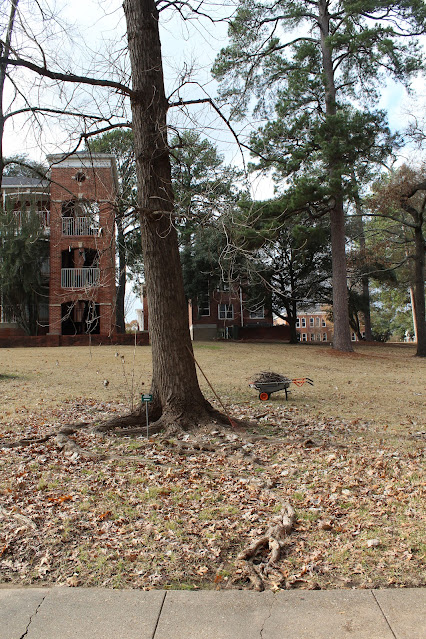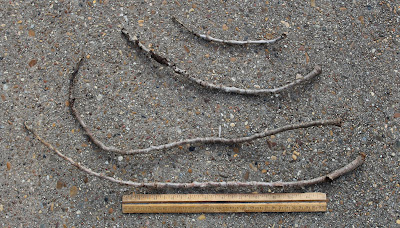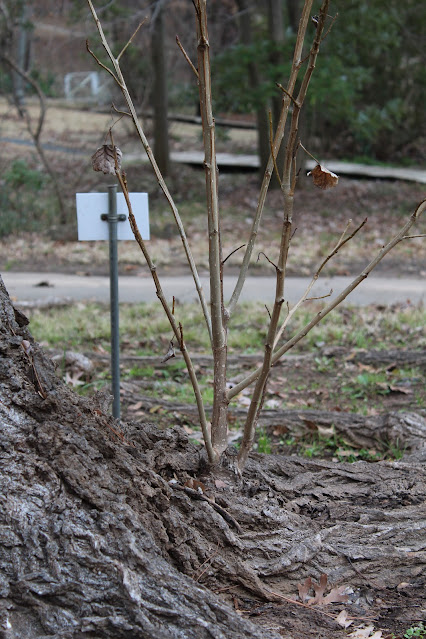Like people, some trees are easy going while others require more maintenance. The eastern cottonwood (Populus deltoides) is particularly high maintenance. When growing in a wild setting, it is irksome because it sends its 'cotton' outward into nearby civilized areas, covering window screens, clogging ducts, and making a general nuisance. And when growing in a maintained landscape, it stands out from its peers as being a problem case. See below for more details.
 |
Our tree of the week is approximately 25 years old. It grows between Rotary dormitory and the Student Union Building. It was one of two eastern cottonwoods planted at approximately the same time: one seedling was from Walter B. Jacobs Memorial Nature Park, and one seedling was a volunteer from the campus greenhouse. We cannot say which of the two trees remains, but we have before us a very tall, imposing, troublesome tree.
|
 |
| In January, there are plenty of leaves to cover the ground. Leaves do not all fall at once, so there are several opportunities for outdoor fun, if you like raking (or blowing) leaves. And, it must be noted, eastern cottonwoods do not only drop their leaves during the autumn and winter months. This specimen in particular has been known to drop piles of leaves during dry summer months. But why waste your time raking leaves? Why not just mulch them with a lawn mower? |
 |
Extensive surface roots make it nearly impossible to mulch these leaves with a mower. Looking at the above picture, we see lawn mower damage that these roots have sustained.
|
 |
Using a blower might save you some time; however, depending on what you intend to do with the collected leaves, you might need to sort through your leaf piles for the numerous twigs and branchlets. The above wheelbarrow is full of twigs collected from under the cottonwood.
|
 |
Twigs tend to be at minimum a foot in length.
|
 |
Eastern cottonwood twigs are characteristically knobby.
|
 |
Examining the roots and base of the trunk, we see young stems growing from the root structure.
|
 |
Looking closer, we see that this is not the first time that a shoot has grown in this spot. This area has previously been trimmed. For the sake of aesthetics, these stems will also be cut.
|
 |
Oh, hey there ladybug. Whatcha doin'?
|
 |
Leaves have been raked away from surface roots and the collected twigs were hauled off to the dumpster. In maintaining the grounds of the arboretum, we try to retain as much organic matter as possible, so all leaves are mulched and stay on the lawn. This provides a recycling of natural resources and minimizes waste.
|
|
|
|
 |
There are still leaves on the ground, but not under the eastern cottonwood!
|
 |
With the leaves removed, we can really appreciate the surface roots. In all seriousness, the above ground root structure appears to undulate, suggesting the movement of water, calling to mind the banks of a stream or river—the cottonwood's natural habitat. It's unfortunate that the roots have sustained so much damage from the mowers.
|











